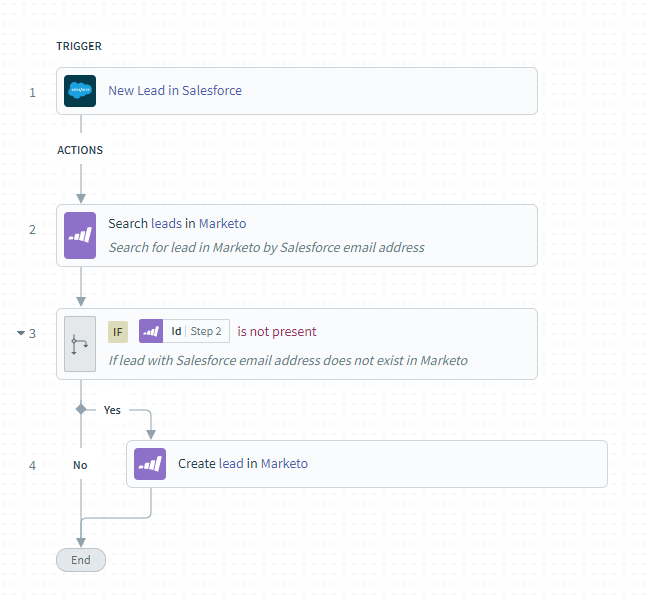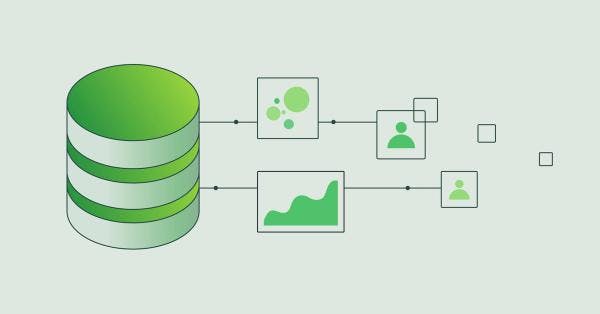The Top 5 Most Useful Workato Integrations & Recipes
Review the top 5 Workato integrations and recipes and learn why Reverse ETL is a simpler solution.

Luke Kline
December 17, 2021
7 minutes

Today, companies have a near-endless number of SaaS applications and different data sources. One of the largest challenges that organizations face is figuring out how to share data between these systems and get them to talk to one another. In the past, business teams were forced to deal with manual CSV exports/imports and data teams were tasked with building custom integrations to send data to and from various tools. Both of these solutions are time-consuming and inefficient.
As an iPaaS (Infrastructure Platform as a Service) solution Workato has eliminated many of these problems by creating a platform where you can build intuitive automation workflows to send data to and from SaaS applications. With Workato, you can leverage a simple UI to define triggers and actions. These are then used to kickstart specific workflows and automate a number of tasks and business processes.
All Workato workflows have two core components, triggers, and steps. A trigger is an initial factor that kickstarts your workflow. Triggers can run on a scheduled basis defined by you or be activated by a specific event captured in one of your SaaS tools. Steps are the control flow statements that help you define business logic. They consist of individual actions which carry out specific operations. However, every step usually has several conditionals or flow statements to help you iron out the processes within your workflows. Here are a few examples:

Top 5 Workato Integrations/Recipes
Slack
One of the coolest features that Workato offers is WorkBot. With WorkBot you can automatically send notifications, connect various tools together, and complete actions directly within Slack. Sales approvals are a great example of this because it is often the difference between a new customer or a lost opportunity. Moving these details to Slack provides managers better visibility and keeps their email inboxes from being flooded with request notifications.
Quickbooks
Once an opportunity is marked as "Closed-Won" in Salesforce it's often difficult to invoice the customer because the information usually does not exist in Quickbooks. When a deal has been moved to this stage you can use Workato to create an associated customer within Quickbooks and also add in the corresponding products that were purchased for billing. This can then automatically trigger an invoice to the customer with the appropriate information in place. You can also do the reverse of this and send Quickbook information directly to Salesforce.
Salesforce/Hubspot
In many cases, you are generating customer data across many SaaS applications. This information is extremely valuable to your sales and marketing teams, so it only makes sense to send that data directly to Salesforce or Hubspot. With Workato, you can create new contacts directly within these platforms every time a new customer is added to NetSuite. You could also do the same thing after a new lead is created within Marketo.
Google Sheets
Often, individual sales reps prefer to manage and their sales territory within personalized Google Sheets. With Workato can easily sync Salesforce or Hubspot accounts and contacts based on specified criteria that you define to a Google Sheet.
Jira
Jira is great for managing product development, but sometimes, you need to ensure that your issues created in Jira also create tickets in Zendesk. With Workato you can set up an automatic workflow to do just his. New issues in Jira can trigger Workato to automatically create or update tickets directly in Zendesk.
All of these recipes and use cases are relatively simple, and it's very easy to see the value Workato provides. If you can think of a process to automate, it's highly likely that you can do it through Workato
Challenges with iPaaS
Workato is a fantastic automation tool. It is excellent at automating tasks and business processes for nearly every department within an organization, and this is one of the core reasons that businesses adopt it. However, actually integrating data between two tools can be very challenging as it requires a ton of effort on behalf of the user.
Workato is imperative, you have to tell it exactly what to do and how to do it, and if you don't know how to do it yourself it’s nearly impossible. To be specific, you have to define every step in the workflow to ensure that it is functional before being placed into production. One of the problems with this is that it forces you to implement a ton of conditionals and if/then branches for various stages in your workflow. Additionally, you have to build in error checking within every step in your workflow to ensure that you or someone else gets alerted when something breaks.
This tiny workflow sending Salesforce leads to Marketo is a great example.

Before syncing the new leads created in Salesforce to Marketo you first have to check whether or not that contact already exists within Marketo. If that contact does not exist then Workato will create a contact. This is one of the simplest workflows you can do in Workato. In many scenarios, workflows are around 20-30 steps. To make matters worse you have to define each of these individual conditionals to ensure that everything is operational, and a single upstream or downstream change can break your entire workflow.
Since most Workato workflows are trigger-based (sending data in batches in Workato is very expensive) you often have to call the same workflow over and over until you tell it to stop (i.e. parallel processing). This can run you up against the API limit, or worse even cause the API itself to crash. When this happens, Workato will wait until the API comes back online to finish your workflows.
In addition to this, you don’t have any ability to create a 360-degree view of your customer because you are simply sending data from point “A” to “B” and automating workflows defined by triggers that you set. This creates a problem because it means you don’t have a single source of truth and this is the exact reason that Reverse ETL is a better alternative when it comes to democratizing data to SaaS applications.
Why You Should Use Reverse ETL
As a Data Activation solution, Hightouch does not replace the workflow aspect of iPaaS solutions when it comes to automating tasks and processes between SaaS applications. However, Hightouch does simplify the process of moving data from one system to another because it lets you leverage your data warehouse (i.e. your single source of truth), and define your data with simple SQL. Whereas Workato is an Imperative iPaaS solution, Hightouch is a declarative SaaS solution.
Instead of building complex workflows with if/then branches, loops, variables, and general programming functionality to move data from one system to another, Hightouch lets you leverage the existing data models and business logic (ex: product qualified user, lead score, churn score, ARR, LTV, new lead, etc.) defined in your warehouse and map the appropriate fields to your end destination.
This means you don’t have to worry about adding dependencies to figure out if you are duplicating data to another system because Hightouch only syncs the recent changes. On top of this, Hightouch sends your data in batches so you can make fewer API calls, saving you both time and money and ensuring that you don’t run up against any API rate limits.
This provides an advantage over a conventional iPaaS tool like Workato because you can sync any form of customer data into the tool of your choice. Workato does allow you to sync data from the warehouse, but it creates an illusion of accessibility because Workato’s UI has a steep learning curve, and actual hands-on coding is often required to get the end result you are looking for.
Hightouch handles all of the underlying maintenance and business logic that would normally come with building a complex workflow so you can focus on turning insights into actions automatically. With Hightouch you simply choose what fields you want to map to your end destination, and Reverse ETL takes care of everything that happens in the middle.
With Hightouch, you set it and forget it. Our built-in alerting mechanism enables you to view your error rate percentage and specify when something statistically significant occurs.
Getting Started
The first integration with Hightouch is completely free, so you can actually try it out for yourself.






